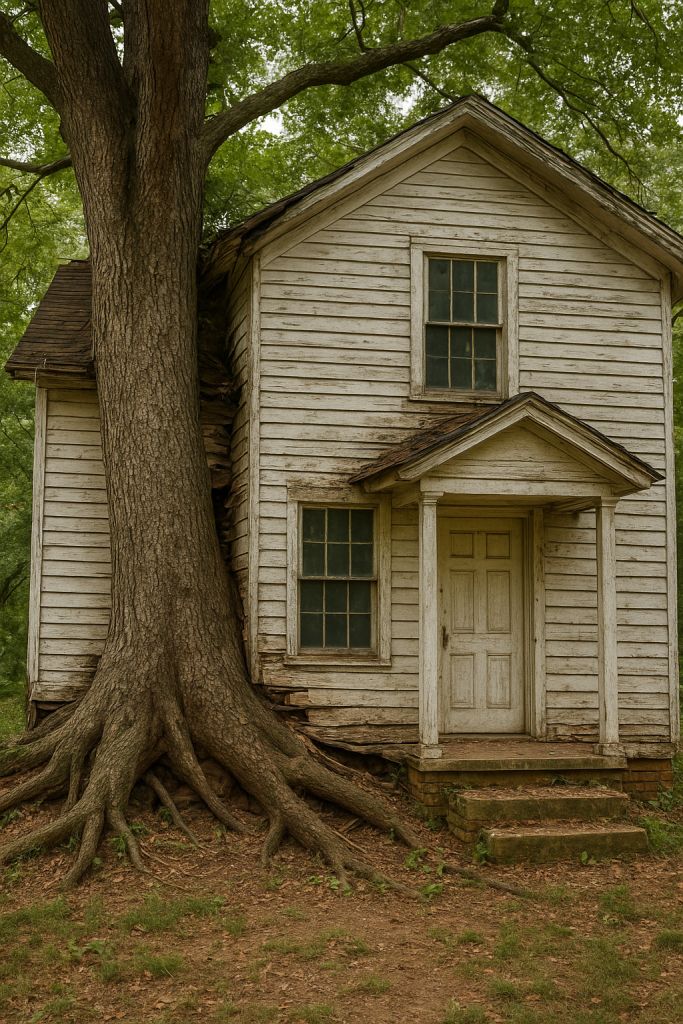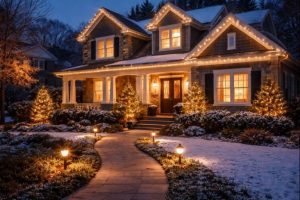Trees add beauty, shade, and value to residential properties, but over time, they can cause significant structural and maintenance issues for houses. From root systems disrupting foundations to leaf debris clogging gutters, trees influence nearly every aspect of a home’s longevity and safety. Understanding these impacts is crucial for proactive property care. This article explores in depth the main entities—root pressure, sap, shade, and leaf debris—and their sub-entities, showing how even small trees can cause major long-term effects on homes.
What Impact Do Tree Roots Have on a House Over Time?

Tree roots are essential for the survival of trees, but when planted near homes, their natural growth patterns can create structural and functional challenges. Root systems expand aggressively in search of water and nutrients, and this expansion can lead to substantial damage to home infrastructure over years.
Foundation Damage
Tree roots exert pressure on the foundation as they grow and spread. Over time, they can cause cracks in the concrete slabs or basement walls, weakening the structural integrity of the house. This issue worsens in regions with expansive clay soils where moisture levels fluctuate, causing soil to shift and roots to exacerbate the movement.
Soil Movement
Roots alter soil stability by extracting water, leading to soil shrinkage or expansion. This process causes uneven settling beneath the house foundation, resulting in misaligned doors, cracked walls, and uneven floors. Homes in drought-prone areas are particularly susceptible because tree roots aggressively seek moisture, leaving voids in the soil.
Plumbing Issues
Tree roots naturally gravitate toward water sources, which often means invading underground plumbing lines. Over time, roots can infiltrate small cracks or joints in pipes, causing blockages and leaks. This can lead to costly repairs and potential water contamination issues if not addressed promptly.
Driveway & Walkway Cracks
As roots expand horizontally near the soil surface, they push up sidewalks, driveways, and patios. This uneven lifting not only creates tripping hazards but also accelerates the deterioration of paved surfaces. Maintaining a safe and visually appealing landscape becomes a challenge without early intervention.
How Does Leaf Debris Impact a House Over Time?
Falling leaves are more than an autumn nuisance; they have year-round implications for the health of a home’s drainage and roofing systems.
Gutter Clogging
Leaves accumulate in gutters and downspouts, obstructing water flow. Over time, this causes water to overflow, damaging the fascia boards, siding, and even the foundation as water pools near the base of the house. Professional solutions, such as Wheaton gutter cleaning services, can help homeowners prevent these issues by ensuring debris-free gutters year-round.
Table: Common Issues Caused by Gutter Clogging
| Issue | Consequence |
|---|---|
| Water Overflow | Siding damage and soil erosion |
| Roof Water Backup | Leaks and mold formation in the attic |
| Ice Dams in Winter | Increased roof damage and leaks |
Roof Water Damage
Clogged gutters force water to back up under roof shingles, leading to leaks and structural deterioration. Persistent moisture accelerates wood rot in roof decking and rafters.
Mold Growth
Moisture from trapped debris provides an ideal environment for mold and mildew, which can spread from the roof into the home’s interior, posing health risks and requiring costly remediation.
Fire Hazards
In dry climates, accumulated dry leaves in gutters and on roofs increase fire risk. A single spark from a nearby wildfire or chimney can ignite the debris, threatening the entire structure.
How Does Tree Sap Affect a House Over Time?
Tree sap and resin may seem harmless initially, but they have long-lasting consequences for a home’s aesthetics and maintenance requirements. Dripping sap from branches overhanging a house can create persistent staining and other issues.
Staining on Roofs & Siding
Sap drips can harden on roofing materials and siding, leaving stubborn stains that are difficult to remove. Over time, this reduces the curb appeal of a property and may require specialized cleaning methods to restore the original appearance.
Attracting Pests
Sticky sap attracts insects such as ants, aphids, and wasps. These pests may find their way into the home, creating secondary infestations. The presence of pests not only damages vegetation but also poses health concerns for residents.
Paint Damage
When sap accumulates on painted surfaces, it can cause paint to bubble or peel. Over time, this leads to higher maintenance costs for repainting and refinishing exterior areas of the home.
Cleaning Challenges
Hardened sap is notoriously difficult to clean without damaging the surface underneath. Harsh chemicals or scrubbing may strip away protective coatings, leaving the structure more vulnerable to weather-related wear and tear.
What Is the Effect of Shade from Trees on a House?
While shade offers energy savings and comfort during hot weather, prolonged shading of certain areas of a house can lead to unintended consequences that affect structural longevity and maintenance costs.
Increased Moisture Retention
Constant shade prevents roofs and walls from drying quickly after rain. Prolonged dampness creates an environment conducive to mold and mildew growth, which compromises structural materials and indoor air quality.
Moss Growth
Shaded, damp conditions on roofs promote moss and algae growth. Moss retains moisture, which can accelerate the deterioration of shingles, reducing the roof’s lifespan significantly. Cleaning moss can be labor-intensive and costly if neglected.
Reduced Energy Costs
On the positive side, shade helps regulate indoor temperatures, reducing the need for air conditioning. However, this benefit should be balanced against the risks of moisture damage and roofing degradation.
Decreased Roof Lifespan
Continuous shade shortens roof life by keeping it perpetually damp and vulnerable to rot. Homeowners often overlook this factor until leaks develop, leading to expensive repairs or replacements.
Conclusion
Trees bring undeniable beauty and environmental benefits, but they also present significant challenges for homeowners if not managed properly. Root systems can undermine foundations and plumbing, sap can damage finishes and attract pests, shade can shorten roof life, and leaf debris can compromise drainage and increase fire risk. Regular maintenance—such as pruning, gutter cleaning, and root barrier installation—ensures that trees remain assets rather than liabilities to your home.
FAQs
Q1: How far should trees be planted from a house?
Trees should generally be planted at least 15–20 feet away from the house, depending on the species and its mature size, to minimize root and canopy interference.
Q2: Can tree roots damage a concrete foundation?
Yes, tree roots can exert enough pressure to crack or displace concrete foundations, especially if the soil around the foundation expands and contracts due to moisture changes.
Q3: How often should gutters be cleaned if there are trees nearby?
Gutters should be cleaned at least twice a year—spring and fall—but homes with heavy tree coverage may require quarterly maintenance.
Q4: What is the best way to remove sap from siding?
Use a mild solvent or rubbing alcohol with a soft cloth to remove sap. Avoid harsh scrubbing that may damage the paint or protective coating.
Q5: Do trees increase home value despite these risks?
Yes, mature trees generally increase property value, but proper maintenance is key to preventing damage and costly repairs.






